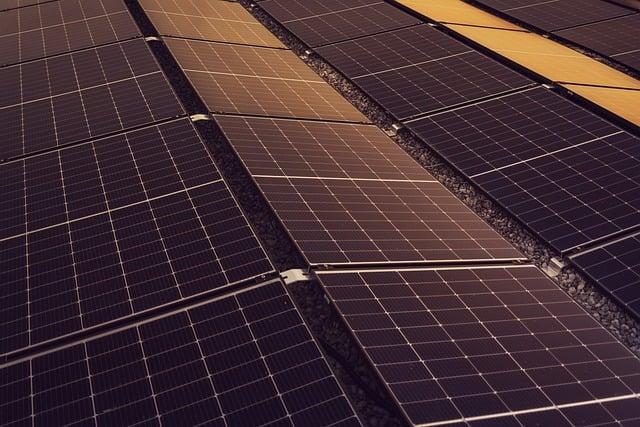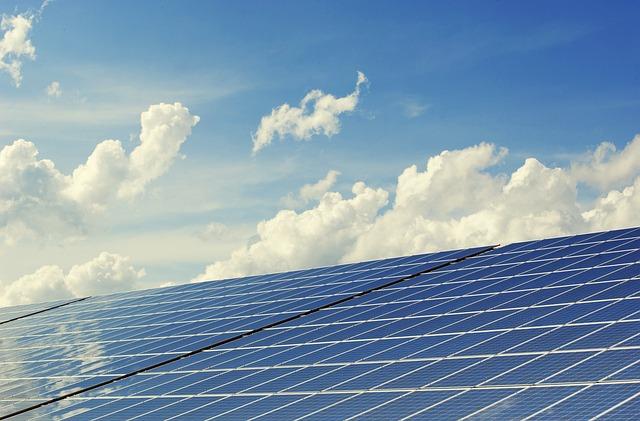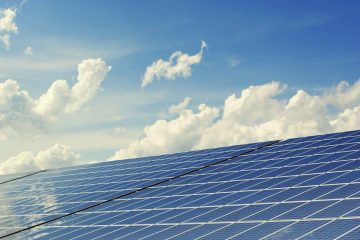Table of Contents
- Understanding the Lifespan of Solar Panels
- Factors Influencing Solar Panel Durability
- Maximizing the Efficiency of Your Solar Investment
- Signs Its Time to Replace Your Solar Panels
- Recommendations for Prolonging Solar Panel Longevity
- Q&A
- Insights and Conclusions


Understanding the Lifespan of Solar Panels
When considering an investment in solar panels, it’s important to grasp how long these energy-saving systems typically endure. Modern solar panels are designed to last anywhere from 25 to 30 years, with some manufacturers offering warranties that guarantee production for this duration. Over time, solar panels undergo a slow degradation process, reducing efficiency slightly each year. On average, you might see a decrease of about 0.5% to 1% annually. Despite this, even after decades of service, panels still achieve a substantial percentage of their initial efficiency.
To maintain optimal performance, regular maintenance is key. Maintenance tips include:
- Regularly clearing dust, leaves, and other debris from the panel surface.
- Scheduling professional inspections every few years.
- Monitoring output performance through a solar monitoring system.
With these simple actions, you can extend the lifespan and effectiveness of your solar panels, ensuring they provide clean energy for years to come.
| Type | Lifespan |
|---|---|
| Monocrystalline Panels | 25-30 years |
| Polycrystalline Panels | 20-25 years |
| Thin-Film Panels | 15-20 years |
Beyond the basic longevity, technological advancements are continually enhancing solar panel efficiency. Innovations in material science and engineering lead to improved panel designs that not only boost power output but also resist wear and tear more effectively. As these advancements progress, the cost-effectiveness and long-term value of opting for solar panels keeps improving, making them a smart choice for sustainable energy investment.


Factors Influencing Solar Panel Durability
| Factor | Impact on Longevity |
|---|---|
| Material Quality | High |
| Environmental Exposure | Variable |
| Installation Quality | Critical |


Maximizing the Efficiency of Your Solar Investment
Investing in solar panels is a smart move towards sustainability and cost-efficiency. To ensure you get the most out of your installation, it’s essential to focus on several key factors that influence the system’s performance. First, consider regular maintenance. Dust, leaves, and other debris can accumulate on the panels, reducing their effectiveness. Simple cleaning and occasional inspections can significantly impact your system’s output.
Another crucial factor is the orientation and tilt angle of your panels, which can vary depending on your geographic location. Ideally, your panels should face south if you’re in the Northern Hemisphere and north in the Southern Hemisphere, capturing optimal sunlight throughout the day. Adjusting the tilt angle based on the season can also improve efficiency by about 5-15%.
| Factor | Effect on Efficiency |
|---|---|
| Regular Cleaning | Increases output by 10-20% |
| Correct Orientation | Maximizes sunlight capture |
| Tilt Adjustment | Boosts efficiency 5-15% |
Lastly, using energy storage systems like batteries can enhance your solar panel setup. These systems store excess energy generated during the day, allowing you to use solar power even after the sun goes down. This not only reduces reliance on the grid but also helps in managing energy supply during peak usage times, ultimately increasing the return on your investment.


Signs Its Time to Replace Your Solar Panels
One of the most evident indicators that your energy solutions might need an upgrade is a drop in energy output. Consistently low electricity generation compared to when the units were new should not go unnoticed. It’s essential to monitor their performance regularly. Keep an eye on your utility bills or use a monitoring system for precise data. If you notice a significant discrepancy between the expected and actual output, it might be a signal for investigation.
Visible wear and damage are clear visual cues that parts might need replacing. Over time, exposure to harsh weather conditions can lead to cracked or discolored panels. While minor issues like dirt or dust can be resolved with cleaning, more severe damage such as persistent shading on cells due to environmental changes around your installation should not be ignored. Damaged surfaces often mean diminished efficiency and reduced energy capture.
If you’re faced with constantly repairing or maintaining your system, it might be more cost-effective to consider a full replacement. Increasing frequency of repair visits can accumulate costs and impact the overall efficiency of your setup. Signs of frequent maintenance include physical defects, electronic faults, and structural instability. Consider listing common issues you’ve encountered alongside the age and warranty status of your units:
| Issue | Age in Years | Warranty Status |
|---|---|---|
| Panel Cracks | 15 | Expired |
| Output Drop | 12 | Active |
| Frequent Repairs | 18 | Expired |
Recommendations for Prolonging Solar Panel Longevity
To ensure that your solar panels serve you efficiently for as long as possible, routine maintenance is paramount. Regular inspections can help detect and deter factors that may impair performance. Dust accumulation and debris are primary concerns, as they can significantly restrict light absorption. A simple cleaning schedule, ideally involving a soft brush or a gentle hose spray, can immensely aid in maintaining optimal efficiency. Furthermore, paying attention to shading from newly grown trees or erected structures helps in preserving their use-value over time.
Another critical aspect involves electrical health checks. Regular monitoring of the inverter, wiring, and overall system connectivity ensures that any performance issues are promptly addressed. Look for warning signs such as flashing lights on the inverter, which might indicate more complex issues. It’s wise to schedule professional check-ups every few years to tackle any underlying issues you might overlook. This preemptive measure may circumvent potentially costly repairs in the future.
Lastly, consider environmental allowances in your panel setup. Weather conditions can influence your panels’ lifespan, with extreme weather posing possible risks. Installing panels at optimized angles can help mitigate adverse weather impacts like snow accumulation. Additionally, investing in durable mounting solutions and protective additives can reinforce the panels against harsh conditions. Should the need arise, here’s a quick reference guide:
| Condition | Solution |
|---|---|
| Heavy Snowfall | Install with a steeper incline |
| High Winds | Reinforced mounting brackets |
| Frequent Hail | Use protective covers or coatings |



0 Comments